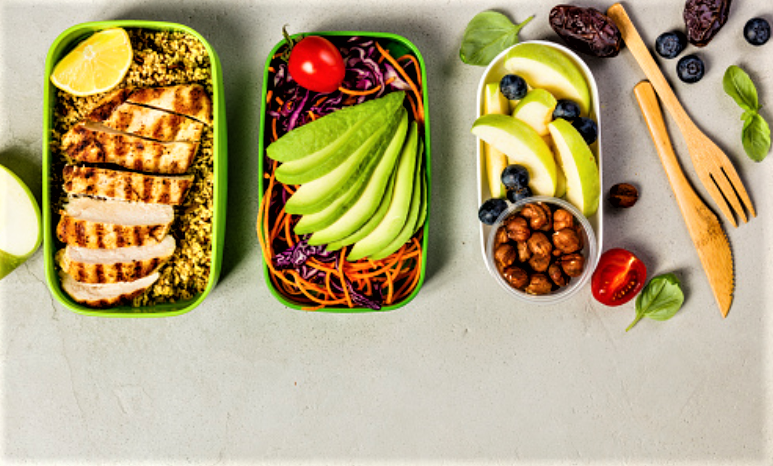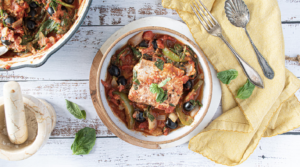Individuals diagnosed with Rheumatoid arthritis, Lupus, Inflammatory bowel disease (IBD)—Chron’s Disease or Ulcerative Colitis, Multiple sclerosis (MS), Type 1 diabetes, Guillain-Barre syndrome, Psoriasis, Chronic inflammatory demyelinating polyneuropathy, Graves’ disease, Hashimoto’s thyroiditis, Myasthenia gravis, Vasculitis, Addison disease, Celiac disease, Dermatomyositis, Pernicious anemia, Reactive arthritis, and/or Sjogren syndrome all have one thing in common—they are all autoimmune diseases. There are more than 80 types of autoimmune disorders.
An autoimmune disorder occurs when the body’s immune system misinterprets healthy body tissue and attacks and destroys it. An autoimmune disorder may affect one or more organs or tissue types, cause abnormal growth of an organ or change in function, and/or the destruction of body tissue impacting blood vessels, connective tissues, joints, muscles, red blood cells, skin, and/or endocrine glands. It is also possible that a person has one or more autoimmune disorders simultaneously.
In order to reduce inflammation, improve or eliminate symptoms, balance hormones, repair the gut, and regulate the immune system, we use the AIP or Autoimmune Protocol with our clients. This protocol is a science-based elimination and reintroduction diet and lifestyle protocol that involves removing food-driven sources of inflammation while increasing intake of nutrient-dense foods, and addressing lifestyle factors like sleep, stress management, movement, and connection with nature and humans, to manage and improve inflammatory markers of the autoimmune disease.
THREE PHASES
With our nutrition clients, we use a three-phase process when making a transition to follow this protocol: Transition, Maintenance, and Reintroduction.
Phase 1: Transition & Prepare to Follow the Autoimmune Diet
We first help our clients understand which foods are exacerbating their symptoms and how to transition to include more nutrient-dense foods that help to decrease systemic inflammation and the body’s misinterpretation of healthy tissue. This is best introduced slowly and with detailed guidance as we work together to create an environment set up for success!
Phase 2: Maintenance & Full Transition
The second phase includes the full emersion of eliminating the inflammatory foods. It is crucial to maintain the diet for at least 30 days to help the body heal. Although, for many people, 60-90 days is best to maximize healing.
*It is important to note that if strictly following the AIP for 90 days does not improve symptoms, then additional healthcare providers and a full team approach are needed to address deeper-rooted issues*
Phases 3: Reintroduction & Improvement
The final phase occurs when the individual has had measurable improvements in their symptoms from their original ailments as well as improved laboratory values and markers of inflammation. A person has spent about 30-90 days being fully compliant with the elimination phase and at the end of this phase, the individual’s diet is personalized and nutrient-dense with the least amount of restriction possible by slowly adding certain foods back in without causing symptom return. If a food re-introduced brings back symptoms, that particular food may need to be eliminated for a longer period of time or indefinitely.
FOODS THAT ARE ELIMINATED IN PHASE 1 & 2
If you are wondering which foods are slowly eliminated in phase 1 and completely eliminated by phase 2, here is a shortlist:
- All grains (including rice, corn, and grains that contain gluten: wheat, barley, and rye, and pseudo-grains and grain-like substances (think quinoa or amaranth)
- All dairy
- All legumes (including soy, peanuts, and beans)
- All processed vegetable oils (canola, soybean, corn, rapeseed, cottonseed, and safflower)
- All processed food chemicals and ingredients (preservatives, dyes, emulsifiers, thickeners, etc.)
- All refined sugars and non-nutritive sweeteners (like high-fructose corn syrup or stevia)
- All nuts and seeds (this includes seed-based spices, coffee, and chocolate)
- All fruit and berry-based spices (like black pepper, allspice, anise, annatto, caraway, cardamom, celery seed, coriander, cumin, fennel seed, fenugreek, juniper, mustard, nutmeg, and poppy)
- All nightshade-family produce and the spices derived from them (cayenne, chili, pepper, eggplant, goji berry, ground cherry, habanero, jalapeno, paprika, poblano, potato, sweet pepper, tobacco, tomato, tomatillo, wolfberries)
- All eggs
- All alcohol
*This list is adapted from autoimmunewellness.com*
FOODS THAT ARE INCLUDED IN PHASE 1 & 2
Now you may be wondering what to eat with a list like that! It may sound very limiting but there are actually a ton of foods included! Adding a variety of nutrient-dense foods is a critical component of the successful health outcomes experienced by our clients with autoimmune disorders.
- Organ meat and offal (aim for 5 times per week)
- Fish and shellfish (wild is best, but farmed is okay depending on the type: see the EWG’s seafood list here (aim for at least 3 times per week)
- Vegetables of all kinds, as much variety as possible, and the whole rainbow aim for 8+ servings daily
- Leafy green vegetables (lettuce, spinach, kale, collards, celery leaves, etc.)
- Colorful vegetables and fruit (red, purple, blue, yellow, orange, white)
- Cruciferous vegetables (broccoli, cabbage, kale, turnips, arugula, cauliflower, Brussels sprouts, watercress, mustard greens, etc.)
- Roots, tubers, and winter squash (cassava, sweet potato, parsnip, beets, fennel, carrots, rutabaga, turnip, acorn squash, spaghetti squash, etc.)
- Onion family (alliums, onions, leek, garlic, ramps, etc.)
- Sea vegetables (excluding algae like chlorella and spirulina which are immune stimulators)
- Mushrooms (and other edible fungi)
- Seasonings (like cinnamon, cloves, garlic, ginger, saffron, shallots, turmeric, sea salt)
- Quality meats (grass-fed, pasture-raised, wild as much as possible) (poultry in moderation due to high omega-6 content unless you are eating a ton of fish)
- Healthy fats (pasture-raised/grass-fed animal fats (part of your meat cut), fatty fish, olive oil, avocado oil, coconut oil, palm oil [not palm kernel])
- Fruit (keeping fructose intake between 10g and 40g daily-note that 20g is optimal)
- Probiotic/fermented foods (fermented vegetables or fruit, kombucha, water kefir, coconut milk kefir, coconut milk yogurt, supplements)
- Glycine-rich foods (anything with connective tissue, joints or skin, organ meat, and bone broth)
- Gut microbiome superfoods (high-fiber and phytonutrient fruits and vegetables, cruciferous vegetables, mushrooms, roots, tubers, alliums, leafy greens, berries, apple family, citrus, extra virgin olive oil, fish, shellfish, honey and bee products, fermented foods, edible insects, tea, and bone broth)
- Source the best-quality ingredients you can.
- Eat as much variety as possible
*This list is adapted from paleomom.com*
REINTRODUCTION
After 30-90 days of adhering to the Autoimmune Protocol, and re-evaluating symptoms, it is then time to reintroduce certain foods in a systematic order. There are 4 stages of reintroduction and certain foods are introduced one at a time in each stage. Each food is introduced in a specific order starting with the most nutrient-dense (like egg yolks and legume sprouts) through the least nutrient-dense (like cocoa/chocolate). Depending on each individual’s response to each food, the goal is to arrive at the least-restrictive diet that helps to promote the best health outcomes. Foods that are added back in must help to expand the diet but not bring back symptoms. If a food causes symptoms, it may need to be eliminated for a longer period of time or indefinitely.
LIFESTYLE FACTORS
Besides the diet, other important lifestyle factors are equally as important as the nutritional changes. These include:
- Sleep quality and quantity
- Stress management
- Movement & Connection
It’s extremely important for those with autoimmune disorders to get quality sleep lasting between 7-9 hours per night; to manage stress and decrease the allostatic load while building stress resilience; to move the body in ways that feel joyful while improving strength and flexibility; and to connect to humans and nature in order to help regulate the immune system, balance hormones, and aid in the healing process itself.
FINAL THOUGHTS
There is so much more that goes into the process of managing autoimmune disease and realistically this blog post could be a hundred pages deep. There is so much powerful research on the benefits of taking a holistic approach to health and wellness to manage autoimmune diseases, and we at MOVE FULLY NOURISHED are living proof that a functional approach is possible to eradicate symptoms, reduce inflammatory laboratory markers, and get on with life, living to the fullest! If you’d like to read more about our own personal journeys, click HERE
Your Online Dietitian Coach, Ashley Anderson MS, RDN, LDN, CPT, PN1

Your Online Dietitian Coach, Rachel Brown, RD, IBCLC, CDECS, MBA

***Click I’M READY to fill out our coaching application to schedule a complimentary discovery call TODAY! A healthier you is just a call away!***
Resources:
-
- Medline Plus. Autoimmune disorders: MedlinePlus Medical Encyclopedia. Medlineplus.gov. Published 2017. https://medlineplus.gov/ency/article/000816.htm
- Wellness A. What is AIP? The Definitive Guide. Autoimmune Wellness. Published June 4, 2018. https://autoimmunewellness.com/what-is-aip-the-definitive-guide/
- Why Everyone Should Be Eating Organ Meat. The Paleo Mom. Published April 7, 2012. https://www.thepaleomom.com/why-everyone-should-be-eating-organ/
- Wellness A. Reintroductions on the Paleo AIP: The Definitive Guide. Autoimmune Wellness. Published July 16, 2018. https://autoimmunewellness.com/how-to-reintroduce-food-on-aip-the-definitive-guide/



